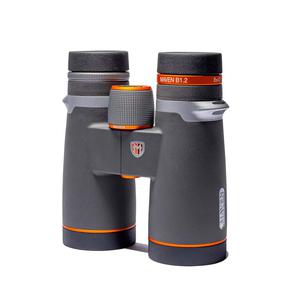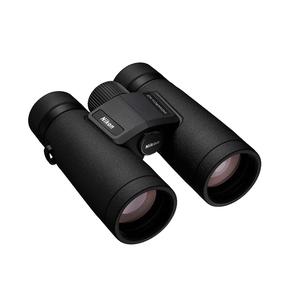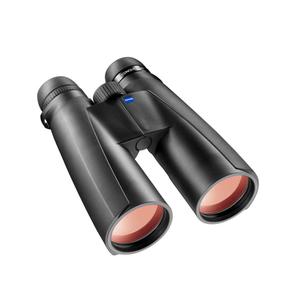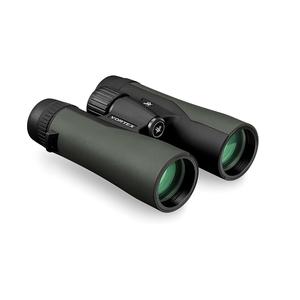Mechanics of Binoculars: How They Function
Binoculars, those remarkable instruments that bring distant objects into sharp, detailed focus, serve an array of purposes - from hunting and birdwatching to stargazing and military operations. But what magic lies within these devices that enables such vivid magnification and image quality?
In this comprehensive guide, we'll delve into the history, design, and mechanics of binoculars, demystifying the science behind these optical marvels in layman's terms.
in short: Binoculars work by using a series of lenses and prisms to magnify distant objects and make them appear closer. Light enters through the objective lens, the large lens at the front, which creates an image. This image is then inverted and corrected by a set of prisms inside the binoculars, resulting in an upright and left-to-right correct view. The eyepiece lenses near the viewer's eyes magnify this corrected image. The combination of these optical elements allows for a clear, magnified view of distant objects.
- Journey Through History: The Evolution of Binoculars
- Peering Inside: The Optical Mechanics of Binoculars
- The Science and Future of Binoculars
- Types of Binoculars
Journey Through History: The Evolution of Binoculars

Tracing back to the 17th century, the birth of binoculars followed the invention of the telescope, marking a significant leap in optical technology. The earliest models, essentially two telescopes mounted side by side, offered users a three-dimensional perspective, a stark contrast to the flat view of a monocular telescope.
These initial versions, however, were cumbersome and limited in their field of vision, often producing an upside-down image which necessitated correction through additional optics.
The breakthrough came with the 19th and 20th centuries, heralding advancements in lens and prism manufacturing. The Porro prism, a brainchild of Ignazio Porro in 1854, revolutionized binocular design. This prism not only corrected image orientation but also enhanced depth perception and expanded the field of view.
Though dominant for over a century, the Porro prism eventually gave way to the more compact roof prism, which, despite its manufacturing complexities, offered a sleeker, more portable binocular design. For those interested in unique binocular models, here's our selection of the top 4 best binoculars in 2024:
- High-End Performance at Affordable Price
- Ideal for Hunting, Birding, and Wildlife Viewing
- Enhanced Low-Light Performance
- Tack-Sharp Edge-to-Edge Vision with Deep Field
- Compact and Lightweight with Improved Light Transmission
- ED Glass Lenses Minimize Distortion
- Ideal for Birding and Wildlife Observation
- Rubber-Armored, Non-Slip Grip Design
- Waterproof and Fog-Proof for Reliable Performance
- Turn-and-Slide Rubber Eyecups for Eyeglass Compatibility
- HD Lens System for Vivid Imaging
- Best for Birdwatching and Nature Observation
- LotuTec Coatings for Scratch Protection
- Conveniently Placed Focusing Wheel for Easy Use
- Perfect for Stalking Game and Rough Terrain
- Exceptional Clarity and Color Fidelity
- Resistant to Water and Fog
- Eyecups Adjustable for Eyeglass Wearers
- Secure, Non-Slip Rubber Armor
- Includes GlassPak Harness for Easy Carrying
Peering Inside: The Optical Mechanics of Binoculars

At their core, binoculars are twin telescopes joined on a single frame, equipped with a focus mechanism and an interpupillary adjustment feature. Each side houses an objective lens, a prism assembly, and an eyepiece. The objective lens, the larger front lens, captures light and forms an initial image. The prism setup then corrects the orientation of this image, while the eyepiece magnifies it for the viewer's eye.
The quality of binoculars hinges on various factors:
Magnification: Essentially the zoom factor of binoculars, magnification determines how much larger the viewed object appears. Higher magnification offers finer details but can make image steadiness a challenge.
Objective Diameter: This refers to the size of the front lens. Larger diameters mean more light can enter, resulting in brighter images, especially in dim conditions. However, this also means added weight and bulk.
Field of View: This metric indicates the breadth of the visible area. A wider field allows more of the scene to be observed but may introduce distortions at the edges.
Exit Pupil: The small circle of light seen in the eyepiece, its size affects the ease of viewing and is particularly important in low-light conditions.
The Science and Future of Binoculars

The field of binocular technology is an intersection of optics, physics, materials science, and more, aiming to enhance binoculars' optical performance, durability, and user experience. Current innovations include:
Digital Binoculars: Integrating digital technology for improved functionality, such as image stabilization and augmented reality, but facing challenges in power management and data security.
Smart Binoculars: Connecting to the Internet for additional information and services, yet grappling with concerns like privacy and reliability.
Eco-Friendly Binoculars: Focusing on sustainability through eco-conscious materials and processes, balancing environmental responsibility with performance and durability.
Types of Binoculars
Each type of binoculars serves specific purposes and scenarios, making them uniquely suited for different activities and preferences.
| Type of Binoculars | Description | Scenarios for Use |
|---|---|---|
| Porro Prism Binoculars | Utilize Porro prisms to invert and correct the image. They are generally bulkier and provide a wider field of view and better depth perception. | Ideal for birdwatching, wildlife observation, and general outdoor use. Their wider field of view makes them great for tracking moving objects. |
| Roof Prism Binoculars | Feature a straight-barrel design using roof prisms. They are more compact and durable but can be more expensive. | Suitable for hiking, travel, and sports events due to their compact and lightweight design. They are easier to carry and handle in crowded spaces. |
| Compact Binoculars | Smaller, lightweight, and easily portable. They usually have smaller objective lenses and are less powerful in terms of magnification and light gathering. | Perfect for casual use like concerts, theatre, and sports events where portability and quick use are important. |
| Marine Binoculars | Built to be waterproof and fog-proof, often with rubber armoring for grip and durability. They usually have a built-in compass and are stabilized to counteract the motion of boats. | Essential for marine activities, boating, and sailing. They can withstand harsh marine environments and are ideal for navigation. |
| Astronomy Binoculars | Characterized by large objective lenses for better light gathering and high magnification. They are usually heavier and may require a tripod for stability. | Used for stargazing and astronomical observation. They provide a wide field of view to see constellations and bright deep-sky objects. |
| High-Powered Binoculars | Offer very high magnification, designed for long-distance viewing. They are larger and require a stable mounting like a tripod. | Suitable for long-range wildlife observation, surveillance, or viewing distant landscapes. Not practical for casual or handheld use. |
| Image Stabilized Binoculars | Equipped with electronic or mechanical stabilization to reduce hand shake and image jitter. | Ideal for situations where high magnification is used and a tripod is not feasible, such as birdwatching or marine use. |
| Zoom Binoculars | Feature adjustable magnification, allowing the user to zoom in and out on a subject. | Versatile for various situations where changing viewing distances are involved, like wildlife safaris or spectator sports. |
| Night Vision Binoculars | Equipped with special optics and electronics to enhance viewing in low light conditions. | Used for nighttime wildlife observation, security, and surveillance in low-light or dark environments. |
| Rangefinder Binoculars | Combine the features of binoculars with a laser rangefinder to measure the distance to an object. | Useful for hunters and golfers to estimate distances, or for tactical and military use where distance measurement is crucial. |
Concluding Thoughts
Binoculars, more than just optical instruments, are gateways to a world unseen by the naked eye. They embody a blend of historical ingenuity and modern innovation, allowing us to explore and appreciate our surroundings in unparalleled clarity.
As we continue to advance in the realm of optical technology, binoculars will undoubtedly evolve, offering us new and exciting ways to view the world around us.
You may also like:




